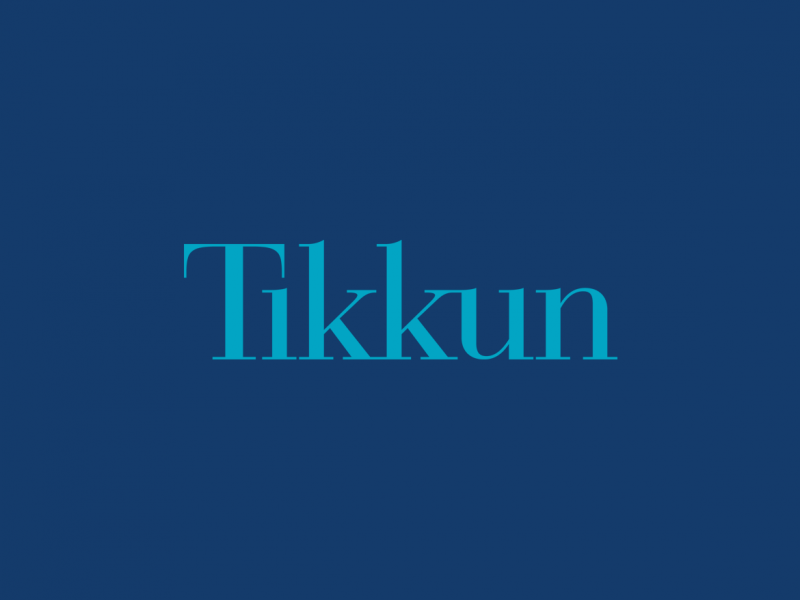I believe that Jewish communities must stop creating “special” programs that serve people with disabilities in segregated settings and instead support personalized efforts to enable people with disabilities to live full and meaningful Jewish lives of their own choosing.
2014
On Violence, Joy, and Justice: The Poetry of C.K. Williams
|
All at Once
Farrar, Straus, and Giroux, 2014
by C.K. Williams
Writers Writing Dying
Farrar, Straus, and Giroux, 2012
by C.K. Williams
On Whitman
Princeton University Press, 2010
by C.K. Williams
In his preface to On Whitman, C. K. Williams says only Shakespeare compares with Walt Whitman in providing him an “inexhaustible” source of inspiration. Yet “with both, but particularly with Whitman, I need a respite, surcease, so as not to be overwhelmed, obliterated. This is more raw than Harold Bloom’s ‘anxiety of influence,’ more primitive.”
On the dust jacket for the Whitman monograph, Michael Robertson calls Williams “one of our most Whitmanesque poets.” The idea of Williams as a Whitman for our time is not wrong, but it is incomplete and potentially misleading. Yes, Williams arrived in his third collection of poems at a long, sinuous free-verse line that reminds one, at first glance, of Whitman. Yes, one finds in Williams great sympathy for the suffering of others and a willingness to open poetry to a wide range of human experience, including parts of it many of us would rather not see.
2014
Dear Jael, Wife of Heber the Kenite
|
The Torah anesthetized me long ago. Back before I could drink wine, it broke my heart to read Leviticus. “No man who has any defect may come near.” I am twice expelled.
2014
The Rabbi Who Visited Death Row
|
Rabbi Chaim Richter and I met on death row during my second year of isolation in a maximum-security women’s prison in the Florida Everglades. I was the only woman on death row at the time. Having been wrongfully convicted in the murder of two police officers, I remained under sentence of death for five years until 1981, when the Supreme Court of Florida changed my sentence from death to life imprisonment. After twelve more years of imprisonment, I won my federal habeas corpus and the federal district court overturned my case. Rabbi Richter visited, counseled, and befriended me throughout those long years.
2014
Five Books on Neoliberalism, Nonviolence, and Society
|
by Jay and Ramaswamy, Scruton, Giroux, Sassen, and Nagler
2014
You Talking About Me? – Disability as a Personal, Social, and Political Construct
|
Currently evolving are some key foundational trends that have great promise for more humanizing and just attitudes and practices for individuals with disabilities, their families, and society as a whole.
2014
Beyond Wage Labor: The Politics of Disablement
|
The recent case of a blind Jewish camper, Solomon Krishef of Grand Rapids, Michigan, who was told he could not be accommodated by Camp Ramah in Canada despite already being at the camp for some weeks, powerfully highlights how accommodation of disabled people continues to be regarded as a burdensome afterthought. In a similar vein, many workplaces and union offices frequently fail to have the ramps in place that would allow disabled people who require wheelchairs for mobility to flourish. Even for religious progressives and advocates of social justice who incorporate anti-racist and anti-sexist practices into their daily work, disability politics too often is new and unfamiliar ground. For far too long, leftist organizations have been deficient in ensuring that meeting spaces are accessible to disabled people. Our disability issues are not identified as priorities, and the left press far too often ignores demonstrations by disabled people.
2014
When Strangers Read My Body: Blurred Boundaries and the Search for Something Spiritual
|
The encounter was not all that different from others I’ve had on the street—a rupture in my peace of mind. It was well past midnight, and I walked the streets alone, delighted to bask in the warmth of a productive day. A figure came into focus, dressed in colors dark as the night. At first the stranger’s words were muted by the music blaring through my headphones—my temporary barrier against the many interlocutors who feel entitled to interaction once they notice my limp. This visibility is something I cannot hide, and I don’t attempt to do so.
2014
The Big Picture – a Movie I’d Love to Make
|
I’d start The Big Picture with a frame showing the earth: from every spot on it zillions of people reach their hands toward what they imagine heaven to be and shout to the God they believe in: “Please God, please universe, give us a world in which love, kindness, generosity, caring for each other, and caring for the earth have replaced violence, wars, economic and social injustice, and environmental destructiveness.”
After that prayer, someone says, “What has God done for me lately? To hell with God. Why should I believe in a God that doesn’t deliver for me?” And suddenly the zillions of people fall silent, withdrawing into their own private isolation, despairing that their prayers and actions could ever make a difference. The film thus opens into the planet-destroying phase of human history in which people actually know that they are collectively destroying the life-support system of the earth but feel there’s no point in doing anything but maximizing their own advantage because they cannot believe that others will ever act from anything more than selfish motives. How did we get here?
2014
Fall 2014 Table of Contents
|
This quarterly issue of the magazine is available both online and in hard copy. The online articles are only available to subscribers and NSP members — subscribe or join now to read the rest! You can also buy a paper copy of this single print issue. Members and subscribers get online access to the current issue and all archives. If you are a member or subscriber who needs guidance on how to register, email miriam@tikkun.org or call 510-644-1200 for help — registration is easy and you only have to do it once.
2014
Love: A Letter To Ashley’s Father
|
Let me lay it down. I am furious with you—you who are known in the media only as the father of a disabled girl you call Ashley. You say she has the consciousness of a three-month-old. You chose a surgeon to lift her six-year-old uterus out of her body, another doctor to slice her breast buds away, and an endocrinologist to flood her with estrogen. Together they froze your daughter’s body in time, making her a perpetual child. The ethics committee at Seattle Children’s Hospital supported your decisions.
2014
Embracing Difference: Native American Approaches to Disability
|
Most U.S. progressives share the view that the destigmatization of “disability” is a positive thing. Translating that vision into widespread social practice, however, is proving difficult to do. The U.S. mainstream has much to learn from Native American communities, many of which have lived experience with non-stigmatizing approaches to differences in community members’ talents and abilities. Western knowledge systems establish opposition concepts such as day/night, good/bad, and able/disabled. These dichotomies form the basis of Western social hierarchies by establishing certain identities as superior and others as inferior, and they shape how people with disabilities are defined and treated within Western communities and institutions.
2014
Spiritual Progressive Faith Formation
|
Sounding the Trumpet: How Churches Can Answer God’s Call to Justice
by Brooks Berndt and J. Alfred Smith Sr.
A Pair of Docs Publishing, 2013
For forty years, J. Alfred Smith Sr. served as the senior pastor for the Allen Temple Baptist Church in Oakland, a church with a national reputation for its ministry of black empowerment and liberation. Anyone who has been in Rev. Smith’s presence has likely been altered by the experience. He is a profound and eloquent person who carries within himself a joyful spiritual confidence coupled with a deep concern about the abiding presence of social injustice in our world. I would say that it is a relief to be around him because he affirms in his being the central message that we all long to hear—that hope and wisdom are reconcilable, that we can see the world exactly as it is with its suffering, pain, and injustice, and still feel with a full heart that we can transcend what is toward what ought to be. In his new book Sounding the Trumpet: How Churches Can Answer God’s Call to Justice, he has joined with Rev. Brooks Berndt to try to convey—through an exchange of letters between Rev. Berndt and himself—how a church can seek to become a force for social transformation.
2014
Two Perspectives on Justice and Spirituality
|
Meister Eckhart: A Mystic-Warrior for Our Times
Matthew Fox
New World Library, 2014
Second Wave Spirituality
Chris Saade
North Atlantic Books, 2014
Like Rumi, the great Christian mystic Meister Eckhart was—according to Matthew Fox’s brilliant and inspiring account—deeply ecumenical, encompassing wisdom that one can find in Jewish, Sufi, Buddhist, and Hindu mystical traditions, as well as in shamanism and indigenous spirituality. Eckhart advocated for social, economic, and gender justice. He also championed an earth-based spirituality and a cosmic consciousness, and taught that we are all artists whose vocation is to birth the Cosmic Christ (or Buddha Nature). All these elements have inspired Fox and influenced his Creation Spirituality. In this book, Fox imagines dialogues between Eckhart and Carl Jung, Thich Nhat Hanh, Rabbi Heschel, and many others.
2014
Deepening Disability Justice: Beyond the Level Playing Field
|
I was very lucky to be born disabled in 1966, just as the disability rights movement was gaining strength worldwide—I was born into an era of disability activists agitating for recognition that we are human beings like any other, and that we should be treated with respect and dignity. This is a political claim, but it’s also a theological one that has resonance with the fundamental precepts of most religions. As a Quaker, for example, I am taught to look for “that of God in every one,” in the words of George Fox, the founder of the Quaker movement. In most cultural contexts and for many centuries, disabled people have struggled for inclusion and survival. Throughout history, many disabled children have died or been left to die.

